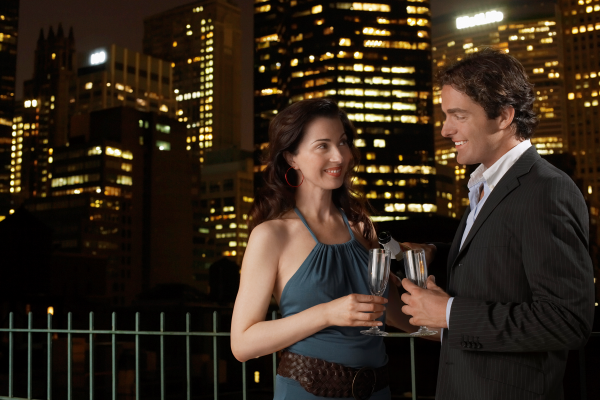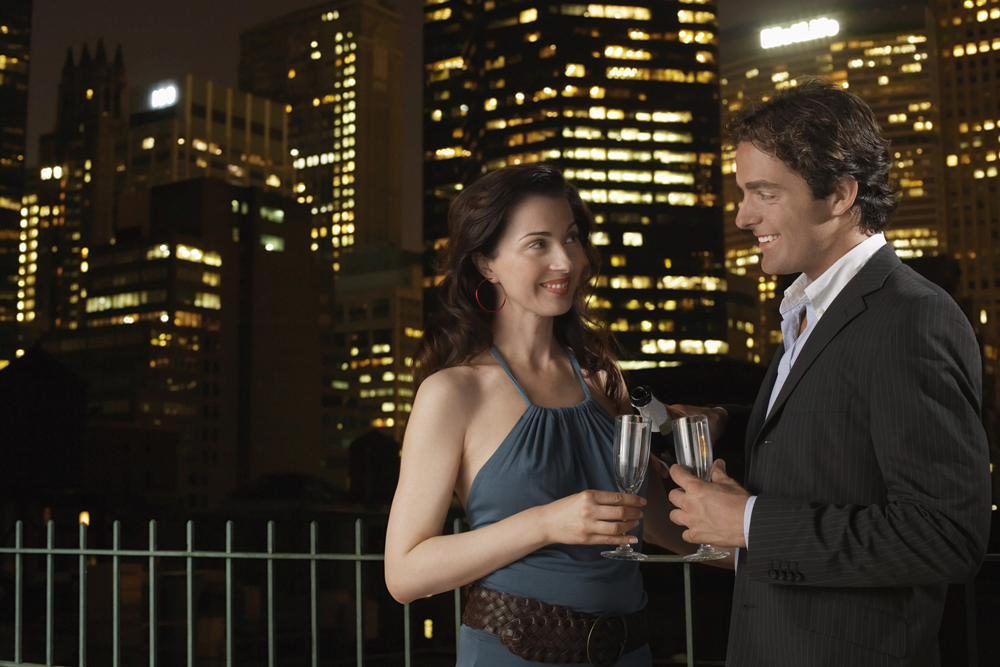Have you ever met someone to whom you felt immediately drawn? Chances are, without even realizing it was happening, you slipped into an unconscious, new yet oddly familiar social dance with that person. Although every couple and every situation is different, science shows that we all follow the same basic patterns when showing and receiving interest from a potential romantic partner. Like birds preening or lizards puffing up their throats, we also give off definite signals to a possible mate. Here are the 5 stages of courtship, as identified by extensive research.

- Flirting
The first stage is basic flirting. Many people claim to have little or no knowledge of how to flirt, yet true flirting is a nearly instinctive behavior that occurs with no foresight or planning. Universally, across vastly different cultures and social norms, women flirt with their eyes and heads, opening their eyes a bit wider and tossing their hair. Men perform a “chest puff,” extending themselves to their full height, tucking in their stomachs, and thrusting out their chests.
Both sexes employ what is known as the “copulatory gaze,” staring intently at the other person for two to three seconds before breaking away. Open smiling that shows both the upper and lower teeth, nervous fidgeting, self-grooming, and over-emphasized movements are also common among both men and women.
- Recognition
Recognition begins when deep eye contact is offered and accepted. The prospective partners shift their bodies towards each other, calm some of their fidgeting and self-grooming behaviors, and prepare to move into the next stage. Recognition is a relatively short and simple stage, but it is critical to preparing the partners for the highly meaningful and often scary act of talking to each other.
- Grooming Talk
Grooming talk can feel extremely risky, but it is a natural and critical stage of courtship. Although the words exchanged are often meaningless social banter, both partners’ voices shift. They become higher, softer, and more melodious, using the same tone that they might use with children or those who are ill. In fact, many actors intentionally raise their vocal register by nearly an entire octave when performing a flirtation scene.
Talking also reveals a great deal about each person, such as their background and level of education. Grammar, word choice, and other details can bring the pair together or drive them apart. If all goes well, though, the conversation gradually becomes deeper, setting the backdrop for the next stage.
- Touch
At this point, the pair begin to signal that they are ready for touch through a series of nonverbal cues. Leaning forward, resting an arm on the table, moving the feet closer to the other person, and even stroking one’s own arms are all common cues. At some point, one partner will touch the other in a socially acceptable way, such as a quick hand squeeze or light arm touch. If the other person responds in kind, a much deeper connection is established.
- Body Synchrony
In the final stage, the pair begin to synchronize their movements in a delicate, unconscious way. Lifting their drinks at the same moment is often the first step. At first, the synchrony is brief and quickly broken. But over time, it becomes a more and more definite mirroring—when he leans left, so does she. When she smooths her hair, he does the same. Many times, both partners are unaware of the synching, but it is clear and obvious to observers. Perhaps this is why friends and relatives are often aware of a burgeoning relationship long before the two people involved realize that they are anything more than friends.
The dance of courtship is different for every couple, yet its basic patterns are deeply ingrained into us as humans. Its rituals and routines have survived across cultures, languages, and vastly different societal norms. From early flirting behaviors through the intimacy of body synchrony, research shows that the 5 stages of courtship are absolutely essential to building the bonds that can eventually lead to lasting romantic love.
Looking for verifiable information on the science of attraction and relationships? We’re a neuroscientist and a biological anthropologist eager to help you put the Anatomy of Love to work in your own life.
Written by: Lisa Fritscher
NEXT


